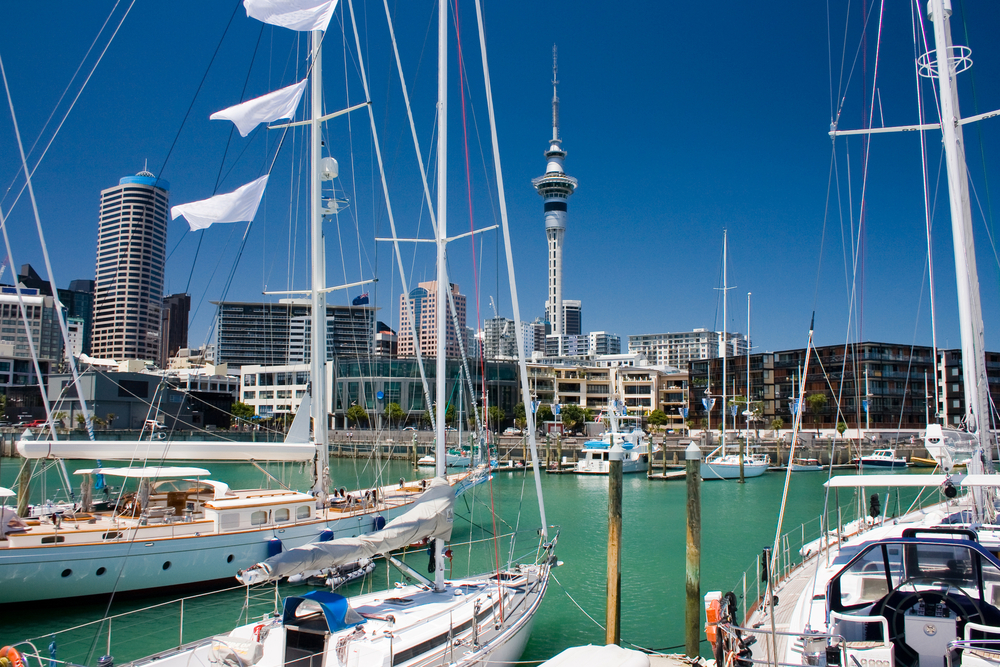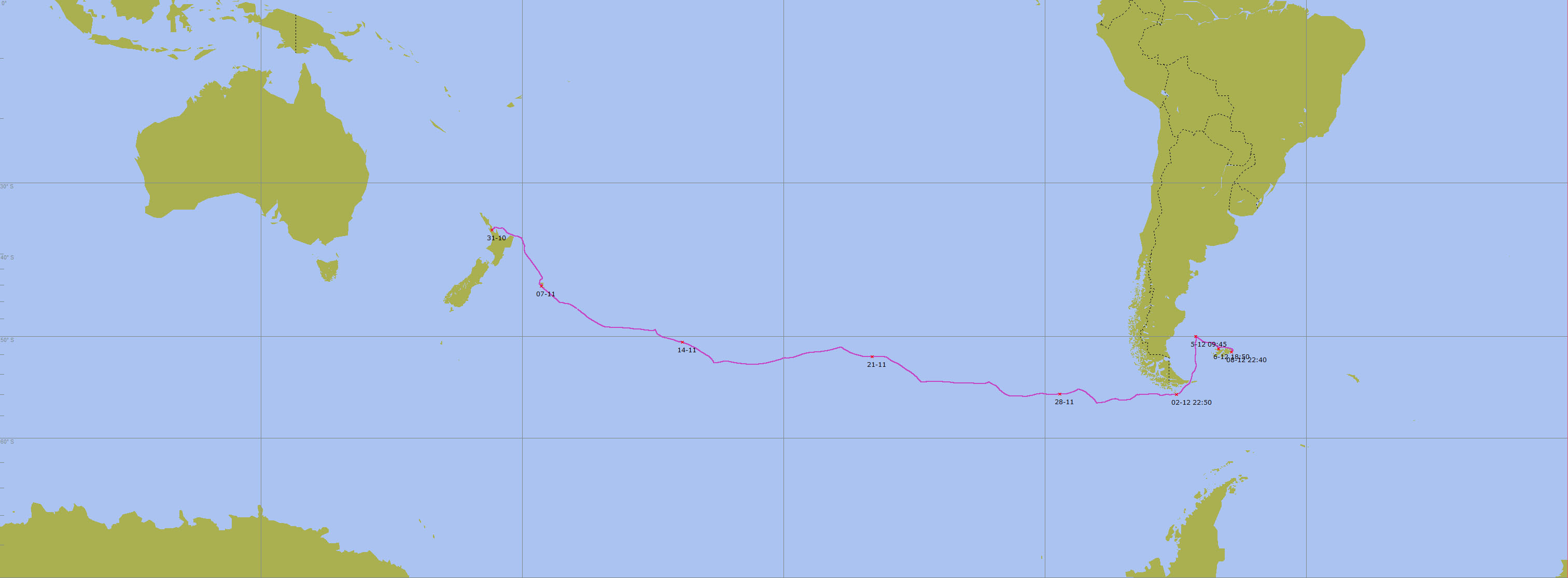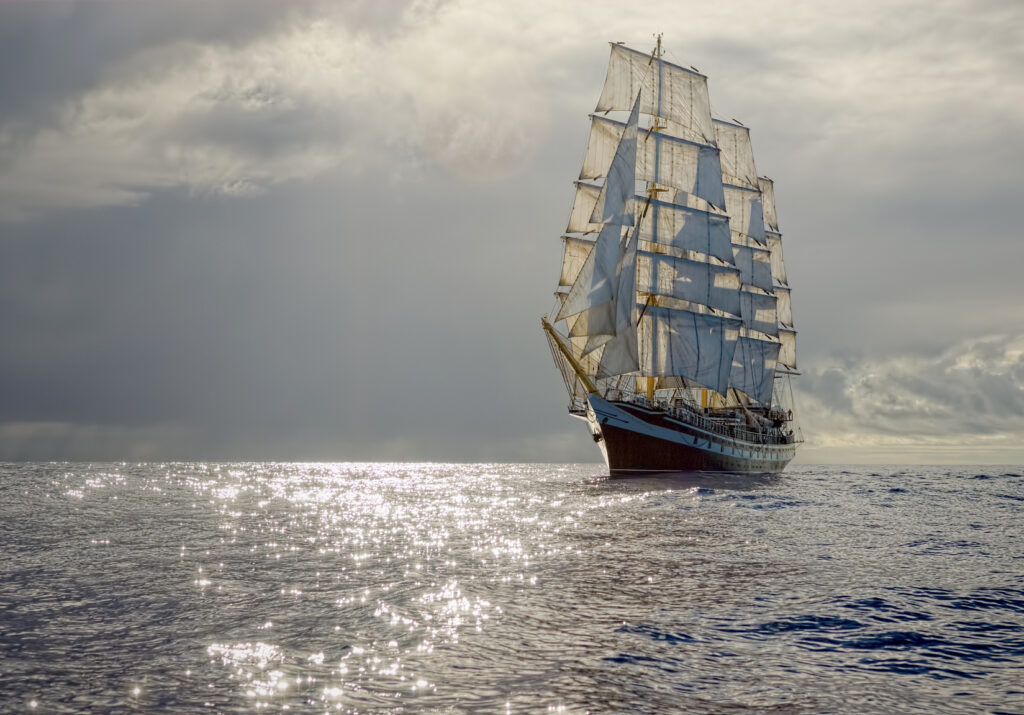Since I started sailing I have always had a special admiration for those who have managed to round Cape Horn under sail. I believe this to be the Mount Everest of sailing. The same opinion is shared by a text on the homepage of the International Association of Cape Horners, an exclusive club that gathers those who have managed to round Cape Horn under sail, passing at least 3000 nautical miles through the latitude of fifty degrees south both west and east. You can read more about them here.
A few months ago I read an article written by an amateur sailor from my country who managed to do it. Not long ago I had the pleasure of meeting her in person at a presentation about her journey. The presentation did not take place at sea, though, but in a club in Zagreb, Croatia, which gathers people who love sea and sailing. It is a place where continentals exchange their sailing dreams and experiences while having a sip and making plans for further sailing adventures.
Mrs Linda Crew-Gee is a Croatian who has lived in London for a few decades and who decided to discover how much she loves the sea and what her relationship with it really is. She chose one of the most difficult ways to find out about that. Linda signed for a trip that was to start in Auckland, New Zealand, and whose destination were the Falkland Islands. It took some 5000 NM to do it and the route included passing the South Ocean and rounding the infamous Cape Horn.

Soon after her decision, Linda found herself aboard Tecla, a traditional hundred-years-old sailing vessel steered by a skilled crew of four. The professional part of the crew consisted of a father, his son, daughter and her boyfriend. In such a combination the son played the role of the captain, the father was the first mate and the mechanic, the daughter was the second mate while her boyfriend was a deckhand. Linda met the crew in Auckland along with other passengers – nine more individuals from all over the world. Many languages could be heard spoken on board by people of seven different nationalities.
The life aboard Tecla was organized according to a specific schedule – the watches consisted of two professionals and four ‘guests’. The professionals would keep watch for six hours and guests for four hours. The helmsmen would switch every 30 minutes. The entire crew had to be on deck when the maneuvers with the massive mainsail took place – usually when the shifts would switch. In each cabin were two members of the crew. While one passenger would rest in the cabin, the other would be keeping watch.
What fascinated me was not the idea to round Cape Horn or the organization of the life on board, but some other aspects of the journey. The crew was not obliged to wear life vests and there was no lifeline attached alongside Tecla. The explanation from Linda fascinated me even more. She says that one had to be focused on how not to fall overboard, while the technique of moving on deck required holding yourself with at least one hand for something solid. Furthermore, she told us about what went on in her mind when she faced thousands of miles of raging sea around her. She wanted to face her fears and she found out that she was not afraid of the sea. She respects it and loves it at the same time. Her fear is the fear of death. Again, she explained that it is impossible to die twice, so if her destiny is to die at sea, let it be. Furthermore, if she falls overboard, the chances of surviving in the freezing sea or to be rescued by another vessel are so small that it is better to die as soon as possible, without a life vest.

There is not much to say about the journey which took some 30 days, but here are some statistics: 5000 NM, nothing at the horizon but the endless sea and waves, wind speed between 17 and 65 knots (sometimes even more), sea depth from 500 m to 5000 m, albatrosses and whales as the only living creatures apart from the crew, and, last but not least, a specific mood and ‘film’ that goes through one’s mind.
After finishing the epic journey and receiving the honor of the Association of Cape Horners, Linda told us about her feelings. She says that she did not do such project in order to escape, but to approach something. That something was the sea and her relationship with it. She also says that concepts such as time and space were totally distorted during the trip so she felt like her soul remained at sea long after she returned back home. When I asked her about when she was going to do it again she instantly replied “as soon as possible but on board of a smaller yacht”. That’s the spirit! Congratulations once again to everyone who have rounded Cape Horn!
At the end of this post I have to share with you a custom that has to be performed when rounding the dreaded cape. The old tradition obliges everyone to drop one piece of the ship when rounding the Cape, in honor of those who died trying to do it. The pieces put together will help sailors’ souls to find their way out of the raging sea…
I wish you a calm sea, a fine wind and a strong mast!

